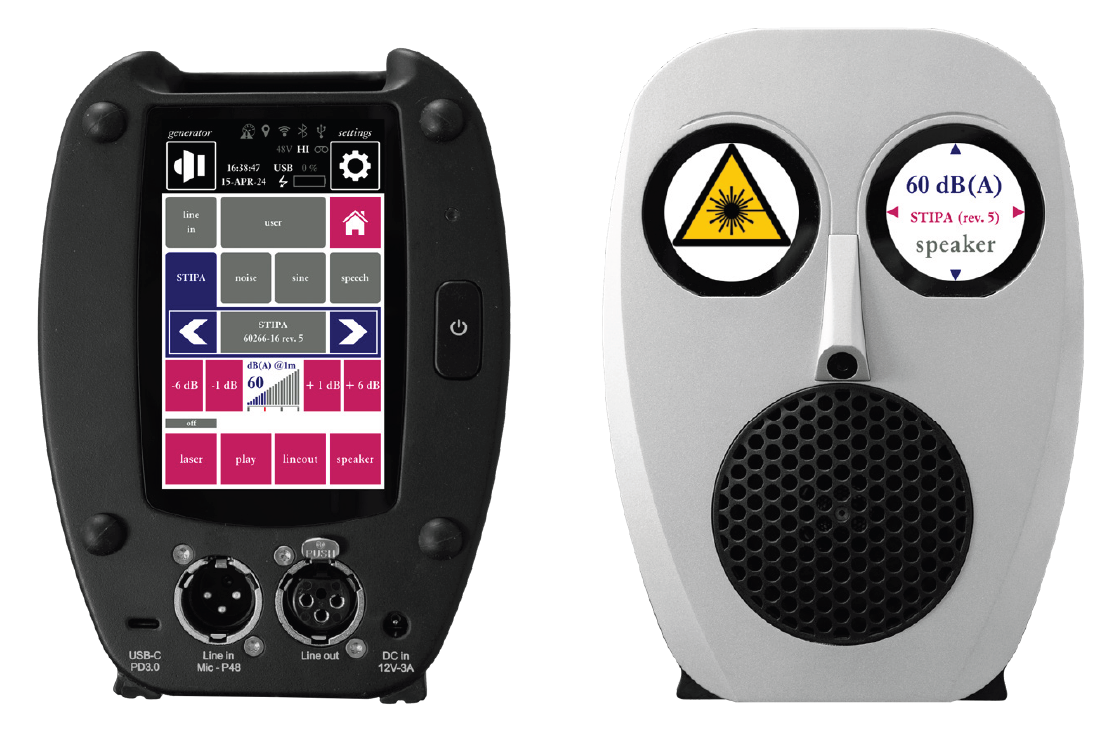Successful launch of the Bedrock BTB115 Advanced Talkbox
On 12-14 June, the annual infocomm exhibition took place in Las Vegas, Nevada. We launched our brand new BTB115 Advanced Talkbox. This new TalkBox makes acoustic testing a lot easier through the integration of some new features and functions, such as laser distance measurements, on-the-fly calibration of the electric XLR input, user defined test signals, triple capacitive touch displays and much more.
The jury of the Infocomm Best of Show awards select our new product as winner in the AV technology category! Perhaps even more importantly, we were able to demonstrate the new device to a large number of new and existing Bedrock users, to an almost overwhelming response. Thanks to all who visited our booth!


.
Introducing e-learning and user forums
Since we started publishing our short explainer videos, many Bedrock users have asked for more in-depth and elaborate tutorials and training materials. We are happy to oblige – please have a look at our brand new e-learning modules! These are part of the Bedrock Community website.
Once you register, you will have access to specific e-learning modules which show you all the details related to working with the SMxx or the AM100. There is a separate module for speech intelligibility measurements.
Also part of the Bedrock community website: brand new user forums! Place questions, remarks and interact with other Bedrock users as well as our developers and support team.
Firmware 3.2 for the AM100 has been released
In our continuous process of improving and expanding the firmware for our meters, we have added new modules and functions to the AM100. As always, the upgrade to firmware 3.2 is free and available to all users.
This update is especially good news for users of the building acoustics modules and users with an interest in environmental acoustics (logging modules). New features include:
- Two new modules for measuring impact noise (L'nT and L'nTw)
- A comprehensive logging module for environmental acoustics, combining 1/3 octave logging with percentiles and all the usual broadband levels
- Several national/local standards for various purposes (e.g. DIN15905-5 for monitoring of live sound levels in Germany).
We also implemented improvements to various modules. Also, as usual, we gladly incorporated feedback from users who pointed out minor glitches and inefficiencies in the user interface. We also fixed some minor bugs and enhanced the stability of the USB interface during transfer of large amounts of data.
From version 3.2 onwards, we will synchronize firmware releases between the AM100 and the SM90/SM50. Firmware 3.2 is currently only available as a beta release for the SM90, but will be formally released in the near future.
The update package for the AM100 can be downloaded here (note that logging in is no longer required). The manual has also been updated.
Your feedback and bug reports are (as usual) gratefully received and used towards future updates.
Opportunities to experience the AM100 and BTB115 Advanced Talkbox hands-on
This summer we will have a booth at the ICSV conference in Amsterdam (8-10 July) as well as at Internoise in Nantes (26-29 August). If you are visiting either conference, please stop by our booth. You will have the opportunity to experience our latest products and firmware upgrades first-hand.
.
Our new flagship instrument: the Bedrock AM100.
For those of you who knew we were working on this: we're sorry to have kept you waiting! But the final result will not disappoint. The Bedrock AM100 continues the development of easy-to-use and versatile measuring tools, progressing several steps at once. Its design, based on glass and alloy parts, is eye-catching as well as extremely durable. The 4" high-resolution capacitive touch display makes the device extremely easy to work with.

We added many new features, such as wireless connectivity (Bluetooth and Wifi), a second input channel, a headset jack and an internal signal generator. We also upgraded the specs in every possible way, from dynamic range to internal storage space and battery life.
We could talk about the AM100 for hours, but you should really see it for yourself - our distributors and dealers are happy to tell you all about this new product, and so is our This email address is being protected from spambots. You need JavaScript enabled to view it. More information about the AM100 is also found here.
Acoustic calibrators are now added to our product line-up
Acoustic calibrators enable you, as a user of acoustic measuring instruments, to verify the level calibration of your instrument, and make adjustments if needed. It is considered "good laboratory practice" to do this before and after every measuring session. Even though our microphones are exceedingly stable, it is still a good idea to adopt this measure as a precaution.
We offer two product versions: BAC1 and BAC2 (respectively for class 1 and class 2 devices). The devices are easy to operate and require very little maintenance. Each device comes with a calibration certificate issued by an external accredited laboratory. The Bedrock BAC2 (class 2 version) comes complete with an adapter for our standard class 2 microphone (BAMT2).

More Articles ...
- 1
- 2






